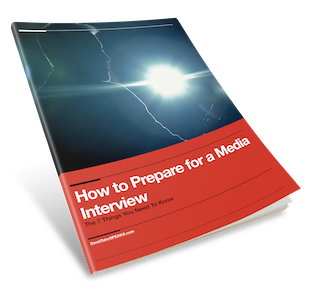
KEY TAKEAWAY: “The best panels aren’t performances—they’re purposeful conversations built on preparation, diversity, and audience-first thinking. With the right approach, panels can truly connect, challenge, and captivate.”
I’ve been on both sides of the panel table—as a panellist and as a moderator—and I’ve seen just how much potential this format has. When done well, a panel can be one of the most engaging and enlightening parts of any event. When done poorly? It’s a missed opportunity at best, and an awkward mess at worst.
Panel discussions are everywhere now—conferences, webinars, team retreats. But too many fall into the same traps: too many voices, not enough substance, or worse, a group of people onstage giving thinly veiled sales pitches.
After years of watching panels succeed and flop (and coaching leaders on how to make them shine), I’ve compiled 25 tips that can turn any panel from passive to powerful. These aren’t theories; they’re field-tested insights from someone who’s lived it, moderated it, and coached it.
Whether you’re organizing one, speaking on one, or just want to level up your next live conversation—these tips will serve you well.
Planning the Panel: Start Smart
- Keep the panel small – ideally 3 people for deeper, more dynamic dialogue. More voices can dilute the conversation and reduce airtime per speaker. Fewer speakers mean each one can contribute more meaningfully.
- Choose panellists with diverse perspectives to encourage meaningful conversation. Include different industries, backgrounds, and viewpoints to avoid groupthink and bring fresh insights.
- Prioritize fresh voices over the same familiar names. Returning to the same “safe” choices often leads to stale discussions. New voices can surprise and re-engage your audience.
- Ensure visible diversity—no more “manels” or homogenous panels. Representation matters, not just for optics but for the richness of conversation it brings. Reflect your audience.
- Include at least one panellist with a contrasting or challenging viewpoint. Disagreement—when respectful—creates energy and insight. A little friction makes for a more dynamic discussion.
Preparing to Communicate: Set the Stage
- Focus on one clear, relevant topic—don’t try to cover everything. Broad themes can lead to shallow commentary. A well-defined topic helps everyone go deeper and stay on track.
- Ban all promotional content or self-serving commentary. This isn’t a pitch fest. When speakers stay focused on insights and shared value, the audience leans in.
- Hold a prep call with all panellists and the moderator. Use it to align tone, format, timing, and who’s bringing what angle to the table. It creates trust and cohesion.
- Align on tone, audience needs, and desired outcomes. Decide: is this educational, provocative, entertaining? Know who you’re speaking to and what they need to walk away with.
- Avoid over-scripting—aim for authentic, in-the-moment conversation. Over-preparation can kill spontaneity. Have structure, but leave space for natural flow.
Designing the Experience: Set the Tone Before It Starts
- Ditch PowerPoint decks unless they add real value. Slides can stall energy and feel like mini-keynotes. Panels should feel conversational, not like rotating presentations.
- Test all tech—especially slides, videos, and mics—beforehand. A tech glitch can derail a great panel. Check everything in advance so nothing distracts from the content.
- Use individual lavalier or headset mics—no mic-sharing. Mic-sharing is awkward, breaks flow, and makes for poor sound quality. Equip each speaker properly.
- Choose comfortable, visually appealing seating and stage layout. Stiff chairs and poor sightlines make for disengaged panelists and awkward body language.
- Give panellists advance notice about stage setup and seating. Let them know what to expect so they can dress comfortably and mentally prepare.
Facilitating Flow: Keep the Conversation Alive
- Skip long bios—get straight into the conversation. Audiences tune out during résumé readings. Start strong with something relevant and engaging.
- Ask panellists to introduce themselves with a personal insight or quick stance. This grounds their role in the conversation and makes them more relatable.
- Change gears every 6–8 minutes to reset audience attention. Vary the format: shift topics, ask a question, run a poll. Keep energy moving.
- Encourage panellists to respond to each other’s points. This creates true dialogue, not a series of isolated monologues. It’s more interesting and more real.
- Plan for a rhythm that avoids one-on-one Q&A monotony. Rotate who leads responses. Mix moderator questions with panellist-to-panellist prompts.
Serving the Audience: Make it Worth Their Time
- Plan and manage audience Q&A with enough mics and runners. Anticipate logistics so audience interaction feels smooth and inclusive—not like an afterthought.
- Be ready to step in if someone tries to hijack the mic. Some audience members go rogue. A good moderator handles it quickly and respectfully.
- Have each panellist share a final takeaway or bold idea. End with purpose. A strong final thought gives the audience something memorable to walk away with.
- Always prioritize audience needs over speaker egos. The panel exists for the audience, not the speakers. Keep that in focus and everyone benefits.
- Ask: what can this panel offer that you can’t find on YouTube? Make it live. Make it interactive. Offer the kind of real-time connection you can’t get from content alone.
Personal Reflections from Both Seats
If there’s one lesson I keep returning to, it’s this: panels work best when they feel less like performances and more like purposeful conversations. When I’ve sat on panels that clicked, it was because there was clarity—of topic, of roles, of value. When I’ve moderated great ones, it’s because we stayed flexible but intentional. And when I’ve coached panelists, the best outcomes came from leaning into who they really are, not who they think they’re supposed to be onstage.
These tips aren’t just about running better events. They’re about fostering better communication in high-stakes environments. And that’s a skill worth honing—onstage and off.
Let’s Make Panels Work
If you’re planning a panel or preparing to speak on one, use this list as your checklist. And if you’re looking for help coaching your next panel, hosting a conference, or want a moderator who knows how to make the most of every moment—I’m here to help.
Let’s make your next panel a standout one.

